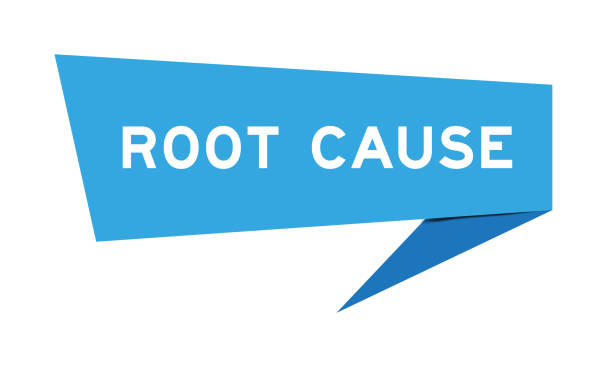Strategies for Building High-Performing Healthcare Organizations in 2024

Strategies for Building High-Performing Healthcare Organizations in 2024
In 2024, the healthcare industry faces numerous challenges and opportunities, driven by technological advancements, regulatory changes, and evolving patient expectations. Building high-performing healthcare organizations requires a strategic approach that addresses critical issues for excellence, fosters collaboration, and leverages partnerships with various stakeholders. This article explores key strategies for achieving high performance in healthcare, focusing on important issues for excellence, fostering a collaborative culture, partnerships with market and customer stakeholders, provider collaborations, stakeholder influence, the American healthcare landscape, centralized management, designing excellence, and establishing cultural, operational, and strategic foundations of excellence.
Addressing Critical Issues for Excellence
Achieving excellence in healthcare requires addressing key issues such as maintaining high standards of patient care, ensuring patient safety, and improving operational efficiency. Organizations must implement evidence-based practices, invest in staff training, and utilize technology to enhance care delivery. Emphasizing patient-centered care, continuous improvement, and complex performance metrics is essential for sustaining excellence. For example, Mayo Clinic and Cleveland Clinic have incorporated evidence-based practices by continually updating their clinical guidelines based on the latest research. They also invest heavily in staff training through comprehensive educational programs and simulation centers, ensuring that healthcare professionals are well-equipped to provide high-quality care. This commitment to continuous education and adherence to best practices has established these organizations as leaders in patient care.
Healthcare providers must focus on reducing medical errors, improving patient outcomes, and adhering to regulatory standards. Incorporating advanced technologies like electronic health records (EHRs) and artificial intelligence (AI) can streamline operations and enhance diagnostic accuracy. Johns Hopkins Medicine has successfully integrated EHRs to improve care coordination and reduce errors by enabling seamless information sharing across departments. Additionally, they have implemented AI-driven diagnostic tools to assist clinicians in identifying complex conditions more accurately and swiftly. Massachusetts General Hospital has utilized AI to analyze large datasets, improving their predictive analytics capabilities and enabling proactive patient care. These technologies have significantly enhanced their operational efficiency and diagnostic precision. Continuous training programs for healthcare professionals ensure that they stay updated with the latest medical practices and technologies.
Furthermore, fostering a culture of accountability and transparency within the organization helps in maintaining high ethical standards and building trust with patients. Regular audits and performance evaluations can identify areas for improvement and help in maintaining consistent quality of care. Patient feedback should be actively sought and incorporated into care practices to ensure that services meet patient expectations and needs. Stanford Health Care has established complex systems for regular audits and performance evaluations, using these processes to continuously refine and improve their care protocols. They actively incorporate patient feedback through regular surveys and patient advisory councils, which helps them tailor their services to better meet patient needs. The University of Texas MD Anderson Cancer Center is known for its transparent reporting practices and commitment to ethical standards. They conduct frequent internal audits and use patient feedback to drive quality improvement initiatives, building a strong trust relationship with their patients.
Key Takeaways:
- Prioritize high standards of patient care and safety.
- Invest in staff training and development.
- Leverage technology to enhance care delivery.
- Focus on patient-centered care and continuous improvement.
- Implement robust performance metrics.
Checklist:
- Adopt evidence-based practices.
- Provide ongoing staff training.
- Utilize advanced healthcare technologies.
- Implement patient-centered care models.
- Establish performance measurement systems.

Fostering a collaborative culture in healthcare organizations enhances teamwork and improves patient outcomes.
Fostering a Collaborative Culture in Healthcare Organizations
Healthcare organizations operate in a collaborative and dynamic environment, requiring seamless coordination among various departments and professionals. Interdisciplinary collaboration enhances patient outcomes and operational efficiency. Effective communication, shared goals, and integrated care models are essential for fostering a collaborative culture. Cleveland Clinic has established interdisciplinary teams that include doctors, nurses, pharmacists, and social workers. These teams work together to develop comprehensive care plans for patients, which has significantly improved patient outcomes and operational efficiency by ensuring all aspects of patient care are addressed.
In healthcare, collaboration goes beyond internal teams; it involves working with external partners such as community organizations, academic institutions, and other healthcare providers. Building a culture of collaboration requires leadership commitment and the establishment of structures that facilitate teamwork. Mayo Clinic has partnered with various academic institutions to conduct joint research projects and share findings, which has led to advancements in medical treatments and improved patient care. Additionally, they hold regular interdisciplinary meetings and joint training sessions to break down silos and encourage knowledge sharing. This collaborative approach has fostered innovation and excellence in patient care.
Technological tools such as collaborative platforms and integrated information systems can support seamless communication and coordination. Johns Hopkins Medicine uses integrated information systems like the Epic EHR system, which allows all healthcare providers involved in a patient’s care to access and update the patient’s information in real-time. This seamless communication has improved care coordination and reduced errors. Recognizing and rewarding collaborative efforts to motivate staff and reinforce the importance of teamwork is also essential. Massachusetts General Hospital has developed a recognition program that rewards teams who demonstrate exceptional collaboration and teamwork. This program has boosted staff morale and reinforced the importance of working together. Developing clear protocols and guidelines for collaborative practices ensures consistency and accountability. Stanford Health Care has implemented clear protocols for interdisciplinary rounds and handoffs, ensuring that every team member is aware of their roles and responsibilities. Encouraging an open-door policy where staff can freely share ideas and concerns fosters an inclusive and collaborative environment. UCLA Health has fostered such an environment by promoting regular open forums where staff can voice their ideas and concerns, leading to improvements in care practices and workplace satisfaction.
Key Takeaways:
1. Promote interdisciplinary collaboration.
2. Enhance communication across departments.
3. Establish shared goals and integrated care models.
4. Foster a culture of teamwork and cooperation.
5. Utilize technology to support collaboration.
Checklist:
– Encourage interdisciplinary teamwork.
– Implement communication tools and platforms.
– Define and align shared goals.
– Develop integrated care models.
– Use technology to facilitate collaboration.

Building strong partnerships with market and customer stakeholders is essential for the success of healthcare organizations.
Partnerships with Market and Customer Stakeholders
The success of healthcare organizations depends on strong partnerships with market and customer stakeholders, including investors, insurance companies, and patients. Effective governance, strategic planning, and financial management are essential for sustaining these partnerships. Engaging patients and their families in care decisions, gathering feedback, and fostering patient loyalty are essential strategies for building strong customer relationships. Kaiser Permanente has been successful in implementing patient-centered care models and engaging patients and their families in care decisions, which has led to improved care outcomes and patient satisfaction.
Investors and insurance companies play a significant role in the financial stability and growth of healthcare organizations. Developing transparent and robust financial strategies helps build trust and attract investments. Cleveland Clinic has developed strategic partnerships with insurance companies to enhance patient access to care and streamline payment processes. Regular communication and collaboration with these stakeholders ensure that the organization can adapt to changes in the market and regulatory environment.
Patients are at the heart of healthcare, and their satisfaction and engagement are important to organizational success. Mayo Clinic has implemented patient-centered care models and involves patients in decision-making processes, improving care outcomes and satisfaction. Gathering and analyzing patient feedback helps identify areas for improvement and tailor services to meet patient needs. Johns Hopkins Medicine has developed loyalty programs and personalized care plans to enhance patient engagement and retention, demonstrating the effectiveness of these strategies in fostering strong customer relationships.
Key Takeaways:
- Build strong partnerships with owners and investors.
- Collaborate with insurance companies and other providers.
- Implement effective governance structures.
- Engage patients and families in care decisions.
- Foster patient loyalty and trust.
Checklist:
- Establish partnerships with key stakeholders.
- Develop strategic plans with partners.
- Implement robust governance frameworks.
- Collect and analyze patient feedback.
- Implement patient loyalty programs.

Successful provider collaborations in healthcare lead to improved patient outcomes and coordinated care.
Provider Collaborations in Healthcare
Provider collaborations, including partnerships with physicians, hospitals, and specialty care providers, are important for delivering comprehensive care. These partnerships enable coordinated care, shared resources, and improved patient outcomes. Building trust, aligning incentives, and ensuring quality standards are key to successful provider collaborations. Geisinger Health and Intermountain Healthcare exemplify successful provider collaborations by maintaining strong partnerships with various specialty care providers, which has resulted in enhanced patient care and outcomes.
Effective provider collaborations start with clear communication and shared objectives. Regular meetings and collaborative platforms help align goals and strategies among different providers. NYU Langone Health utilizes shared electronic health records (EHRs) and integrated care pathways to facilitate seamless information exchange and coordinated care among its providers. Establishing joint training programs and workshops can enhance skills and foster mutual understanding among providers. Cedars-Sinai has successfully implemented joint training programs, which have improved provider collaboration and patient care standards.
Aligning financial incentives and performance metrics ensures that all partners are motivated to achieve common goals. Quality standards and protocols should be jointly developed and regularly reviewed to ensure consistency and excellence in care delivery. Houston Methodist aligns financial incentives and performance metrics to motivate providers towards common goals, ensuring high-quality care delivery. Building trust is fundamental to any successful collaboration; this can be achieved through transparency, mutual respect, and consistent communication. Cleveland Clinic emphasizes transparency and regular communication to build trust and maintain positive relationships with its provider partners. Addressing conflicts promptly and constructively helps maintain positive relationships and focus on patient care.
Key Takeaways:
- Build strong partnerships with physicians and hospitals.
- Coordinate care across providers.
- Share resources and information.
- Align incentives and quality standards.
- Foster trust and collaboration.
Checklist:
- Develop partnerships with key providers.
- Implement coordinated care models.
- Share resources and information.
- Align incentives and quality measures.
- Build trust through transparent communication.
Understanding and engaging stakeholders is essential for effective healthcare management and decision-making.
Influence of Stakeholders
Understanding the sources of stakeholder influence is essential for healthcare organizations. Stakeholders include patients, providers, payers, regulators, and the community. Their influence impacts organizational policies, reputation, and strategic decisions. Engaging stakeholders through transparent communication and collaboration enhances organizational performance. Mount Sinai Health System has demonstrated effective stakeholder engagement by maintaining open lines of communication with patients and community groups, which has improved their organizational performance and reputation.
Patients influence care practices through their feedback and preferences, guiding organizations to adopt patient-centered approaches. Providers, including doctors, nurses, and other healthcare professionals, shape clinical practices and organizational culture. Their expertise and input are imperative for maintaining high standards of care. Children’s Hospital of Philadelphia (CHOP) actively involves its healthcare professionals in decision-making processes, ensuring that clinical practices are continually improved based on frontline feedback.
Payers, such as insurance companies and government programs, influence financial strategies and reimbursement models. Collaborating with payers can lead to more sustainable financial practices and improved patient access to care. Mayo Clinic has formed strategic partnerships with various insurance providers, leading to innovative payment models that enhance patient care and financial sustainability.
Regulators set the standards and guidelines that healthcare organizations must follow. Staying compliant with regulatory requirements is essential for maintaining credibility and avoiding legal issues. Cleveland Clinic consistently engages with regulatory bodies to ensure compliance and stay ahead of policy changes. Community stakeholders, including local organizations and advocacy groups, can influence public perception and support. Building strong relationships with community stakeholders fosters trust and collaboration. Johns Hopkins Medicine has successfully built strong community ties through various outreach programs, which has fostered trust and collaboration.
Engaging all these stakeholders in decision-making processes ensures that the organization can address diverse needs and perspectives, leading to more effective and inclusive healthcare delivery. Mayo Clinic has established advisory councils that include patients, providers, and community members to provide diverse perspectives on healthcare delivery and organizational policies.
Key Takeaways:
- Identify key stakeholders and their influence.
- Engage stakeholders through transparent communication.
- Collaborate with stakeholders to align goals.
- Address stakeholder concerns and feedback.
- Leverage stakeholder influence for strategic decisions.
Checklist:
- Map out key stakeholders.
- Develop communication strategies.
- Align organizational goals with stakeholder interests.
- Address feedback and concerns.
- Involve stakeholders in strategic planning.

Navigating the complexities of the American healthcare landscape requires strategic planning and adaptability
The U.S. Healthcare Landscape
Understanding the sources of stakeholder influence is essential for healthcare organizations. Stakeholders include patients, providers, payers, regulators, and the community. Their influence impacts organizational policies, reputation, and strategic decisions. Engaging stakeholders through transparent communication and collaboration enhances organizational performance. Cedars-Sinai has demonstrated effective stakeholder engagement by maintaining open lines of communication with patients and community groups, which has improved their organizational performance and reputation.
Patients influence care practices through their feedback and preferences, guiding organizations to adopt patient-centered approaches. Providers, including doctors, nurses, and other healthcare professionals, shape clinical practices and organizational culture. Their expertise and input are imperative for maintaining high standards of care. Stanford Health Care actively involves its healthcare professionals in decision-making processes, ensuring that clinical practices are continually improved based on frontline feedback.
Payers, such as insurance companies and government programs, influence financial strategies and reimbursement models. Collaborating with payers can lead to more sustainable financial practices and improved patient access to care. UPMC has formed strategic partnerships with various insurance providers, leading to innovative payment models that enhance patient care and financial sustainability.
Regulators set the standards and guidelines that healthcare organizations must follow. Staying compliant with regulatory requirements is essential for maintaining credibility and avoiding legal issues. Baylor Scott & White Health consistently engages with regulatory bodies to ensure compliance and stay ahead of policy changes. Community stakeholders, including local organizations and advocacy groups, can influence public perception and support. Building strong relationships with community stakeholders fosters trust and collaboration. AdventHealth has successfully built strong community ties through various outreach programs, which has fostered trust and collaboration.
Engaging all these stakeholders in decision-making processes ensures that the organization can address diverse needs and perspectives, leading to more effective and inclusive healthcare delivery. Texas Health Resources has established advisory councils that include patients, providers, and community members to provide diverse perspectives on healthcare delivery and organizational policies.
Key Takeaways:
- Stay informed about regulatory changes and market trends.
- Leverage market opportunities for growth.
- Adapt to competitive pressures.
- Invest in market research and analysis.
- Innovate to stay ahead in the market.
Checklist:
- Monitor regulatory and market developments.
- Identify and capitalize on market opportunities.
- Analyze competitors and market trends.
- Invest in innovation and research.
- Adapt strategies to changing market conditions.
Centralized Management in Healthcare
Centralized management impacts healthcare organization performance by streamlining operations, improving resource allocation, and enhancing standardization. However, balancing centralization with flexibility and local autonomy is essential for meeting diverse patient needs and fostering innovation. Providence Health & Services has successfully implemented centralized management to streamline operations and standardize care across its numerous facilities while maintaining flexibility to address local patient needs.
Centralized management can lead to more consistent and efficient operations across different departments and locations. It enables the standardization of policies, procedures, and quality measures, ensuring that all parts of the organization adhere to the same high standards. Ascension Health has utilized centralized management to ensure that its policies and procedures are uniformly applied across all its locations, enhancing the quality of care provided to patients. Centralization also facilitates better resource allocation, allowing for economies of scale and more strategic investments.
However, it’s important to balance centralization with the need for flexibility and local responsiveness. Local autonomy allows individual departments or locations to adapt to specific patient needs and community contexts. HCA Healthcare exemplifies this balance by setting overarching standards and guidelines while allowing its regional centers the flexibility to tailor services to their local communities. This balance can be achieved by setting overarching standards and guidelines while allowing local managers some discretion in implementation. Effective centralized management requires strong leadership and clear communication channels. Sutter Health demonstrates effective centralized management through robust leadership and clear communication, ensuring consistent implementation of strategies. Regular feedback loops and performance monitoring help ensure that centralized strategies are working as intended and that any issues are quickly addressed.
Key Takeaways:
- Centralize management for operational efficiency.
- Improve resource allocation through centralization.
- Enhance standardization and quality control.
- Balance centralization with local autonomy.
- Foster innovation within a centralized framework.
Checklist:
- Implement centralized management structures.
- Allocate resources efficiently.
- Standardize processes and quality measures.
- Provide local autonomy where needed.
- Encourage innovation within centralized systems.
Designing Excellence in Healthcare Organizations
Designing excellence involves creating systems and processes that support high performance. This includes implementing evidence-based practices, optimizing workflows, and ensuring continuous improvement. A focus on patient outcomes, staff engagement, and operational efficiency is paramount in healthcare management. Rush University Medical Center has established a reputation for designing excellence by integrating advanced evidence-based practices and continuous improvement protocols into their care delivery systems.
Evidence-based practices ensure that care decisions are informed by the latest research and best practices, leading to better patient outcomes. Cincinnati Children’s Hospital Medical Center utilizes evidence-based practices to enhance patient care, ensuring that all clinical decisions are backed by the most current research. Optimizing workflows can reduce waste, streamline processes, and improve efficiency. Banner Health has implemented workflow optimization strategies that have significantly reduced operational inefficiencies and improved patient throughput. Continuous improvement involves regularly reviewing and refining practices to enhance quality and performance.
Engaging staff in these efforts is essential, as they are the ones implementing and experiencing these processes daily. UC San Diego Health provides extensive training and professional development opportunities to ensure their staff remain current with the latest practices and technologies. Additionally, recognizing and rewarding excellence encourages a culture of continuous improvement and high performance. M Health Fairview has developed robust recognition programs to celebrate staff achievements and promote high performance. Incorporating patient feedback into design and improvement efforts ensures that the systems and processes meet their needs and expectations. NorthShore University HealthSystem actively involves patients in feedback loops to continually refine and improve their care delivery systems.
Key Takeaways:
- Implement evidence-based practices.
- Optimize workflows and processes.
- Ensure continuous improvement.
- Focus on patient outcomes and staff engagement.
- Enhance operational efficiency.
Checklist:
- Adopt best practices and guidelines.
- Streamline workflows.
- Establish continuous improvement programs.
- Prioritize patient outcomes and staff well-being.
- Optimize operational processes.
Fostering a culture of empathy, respect, and collaboration is key to achieving excellence in healthcare organizations.
Cultural Foundation of Excellence
A strong cultural foundation is essential for achieving excellence. This involves fostering a culture of trust, collaboration, and continuous learning. Healthcare organizations must promote values of empathy, respect, and accountability among staff and leadership. Henry Ford Health System has built a strong cultural foundation by emphasizing these core values, which has significantly contributed to their excellence in patient care and staff satisfaction.
Trust is the cornerstone of a strong organizational culture, enabling open communication and collaboration. When staff trust their leaders and each other, they are more likely to work together effectively and share ideas. ChristianaCare has implemented trust-building initiatives that promote transparency and open communication, fostering a collaborative environment. Collaboration is also essential for delivering comprehensive, patient-centered care. Encouraging teamwork and cross-functional collaboration helps break down silos and improve care coordination. Ochsner Health emphasizes cross-functional teamwork to ensure that patient care is comprehensive and well-coordinated.
Continuous learning ensures that staff are always improving and adapting to new challenges and opportunities. Providing opportunities for professional development and encouraging a growth mindset are key strategies for fostering a learning culture. Baptist Health South Florida offers extensive professional development programs to keep their staff updated with the latest practices and technologies. Empathy and respect are fundamental values in healthcare, guiding interactions with patients and colleagues. Promoting these values helps create a supportive and compassionate work environment. Spectrum Health fosters a compassionate work environment by promoting empathy and respect among their staff. Accountability ensures that everyone is held to high standards and takes responsibility for their actions. RWJBarnabas Health has implemented robust accountability measures to maintain high standards of care and professional conduct.
Key Takeaways:
- Foster a culture of trust and collaboration.
- Promote continuous learning and development.
- Encourage empathy and respect among staff.
- Ensure accountability and transparency.
- Align organizational values with cultural practices.
Checklist:
- Promote a culture of trust and teamwork.
- Invest in staff training and development.
- Encourage empathy and respect in patient care.
- Implement transparent accountability measures.
- Align values with cultural initiatives.

Integrating technology and optimizing processes are key components of the operational foundation of excellence in healthcare.
Operational Foundation of Excellence
Operational excellence requires efficient processes, technology integration, and resource management. Healthcare organizations must adopt lean methodologies, invest in technology, and optimize resource utilization to enhance operational performance. Advocate Aurora Health has successfully implemented operational excellence by adopting lean methodologies and investing in cutting-edge technologies.
Lean methodologies focus on eliminating waste and improving efficiency, helping organizations do more with less. This involves streamlining processes, reducing redundancies, and optimizing workflows. Sentara Healthcare has applied lean methodologies to streamline their processes and reduce operational waste, resulting in improved efficiency and patient care. Technology integration is also crucial for operational excellence. Advanced technologies like electronic health records (EHRs), telehealth platforms, and data analytics tools can improve efficiency and care quality. Inova Health System has integrated EHRs and telehealth platforms to enhance care delivery and operational efficiency.
Effective resource management ensures that the organization uses its resources wisely and sustainably. This includes everything from financial resources to human resources to physical assets. Cone Health emphasizes effective resource management by optimizing the use of their financial and physical assets to improve patient care. Regular performance monitoring and evaluation help identify areas for improvement and ensure that the organization is meeting its goals. Continuous improvement is a key component of operational excellence, requiring a commitment to regular review and refinement of practices. WellSpan Health has committed to continuous improvement by regularly reviewing and refining their operational practices. Engaging staff in these efforts helps ensure that changes are practical and effective. Sharp HealthCare involves their staff in continuous improvement initiatives, ensuring that operational changes are effective and sustainable.
Key Takeaways:
- Implement lean methodologies for efficiency.
- Integrate advanced technologies.
- Optimize resource utilization.
- Streamline operational processes.
- Focus on continuous operational improvement.
Checklist:
- Adopt lean management practices.
- Invest in technology integration.
- Optimize use of resources.
- Streamline and standardize operations.
- Continuously improve operational performance.

Long-term planning and performance measurement form the strategic foundation of excellence in healthcare organizations.
Strategic Foundation of Excellence
A strategic foundation involves long-term planning, goal setting, and performance measurement. Healthcare organizations must develop strategic plans that align with their mission and vision, set achievable goals, and measure performance against key metrics. Mercy Health has effectively developed strategic plans by conducting comprehensive needs assessments and stakeholder consultations to ensure their initiatives align with their mission of providing compassionate care.
Strategic planning helps organizations set a clear direction and prioritize their efforts. This involves analyzing the current state of the organization, identifying opportunities and challenges, and setting long-term goals. Lehigh Valley Health Network conducts thorough strategic planning by utilizing data analytics to assess their current operations and identify areas for growth and improvement. This has enabled them to prioritize efforts and resources effectively. Aligning these goals with the organization’s mission and vision ensures that all efforts support the overall purpose and values.
Setting clear, achievable goals helps keep the organization focused and motivated. These goals should be specific, measurable, achievable, relevant, and time-bound (SMART). Main Line Health utilizes SMART goals by setting specific targets for patient care improvements and operational efficiency, regularly reviewing these goals to ensure they are met. Performance measurement is essential for tracking progress and ensuring accountability. This involves identifying key performance indicators (KPIs) and regularly monitoring them. Beaumont Health regularly monitors KPIs such as patient satisfaction scores and readmission rates to track progress and ensure accountability. They use this data to make informed decisions and drive improvements. Performance data should be used to inform decision-making and adjust strategies as needed. Novant Health leverages performance data by implementing advanced data analytics tools to continuously monitor and adjust their strategies, ensuring that their operations are aligned with their strategic goals and patient care standards.
Key Takeaways:
- Develop long-term strategic plans.
- Set clear, achievable goals.
- Align strategies with mission and vision.
- Measure performance with key metrics.
- Adjust strategies based on performance data.
Checklist:
- Create comprehensive strategic plans.
- Set and communicate clear goals.
- Align plans with organizational mission and vision.
- Implement performance measurement systems.
- Regularly review and adjust strategies.
Conclusion
In 2024, building high-performing healthcare organizations requires a multifaceted approach. By addressing prime issues for excellence, fostering collaboration, leveraging partnerships, understanding stakeholder influence, and focusing on cultural, operational, and strategic foundations, healthcare organizations can achieve sustained high performance. Effective leadership, continuous improvement, and a commitment to excellence are essential for navigating the complexities of the healthcare industry and delivering superior patient care.
Addressing critical issues for excellence ensures that the organization maintains high standards of care and operational efficiency. Fostering a collaborative culture enhances teamwork and care coordination, leading to better patient outcomes. Leveraging partnerships with market, customer, and provider stakeholders helps build a resilient and patient-focused system. Understanding and utilizing stakeholder influence ensures that the organization can address diverse needs and perspectives. Establishing strong cultural, operational, and strategic foundations provides a solid framework for sustained high performance.
By taking a comprehensive approach to building high-performing healthcare organizations, leaders can drive long-term success and deliver high-quality, patient-centered care.
Key Takeaways:
- Address critical issues for excellence in healthcare.
- Foster a collaborative and dynamic organizational culture.
- Leverage partnerships with market, customer, and provider partners.
- Understand and utilize stakeholder influence.
- Establish strong cultural, operational, and strategic foundations of excellence.
Checklist:
- Prioritize patient care and safety.
- Promote interdisciplinary collaboration.
- Build strong partnerships with owners and market partners.
- Engage patients and families in care decisions.
- Develop strong provider partnerships.
- Map out and engage key stakeholders.
- Stay informed about regulatory and market trends.
- Balance centralization with local autonomy.
- Design systems and processes for excellence.
- Foster a culture of trust and continuous learning.
- Optimize operations and integrate technology.
- Develop strategic plans with clear goals.
- Measure performance and adjust strategies.
Internal Links:
- Digital Transformation in Healthcare
- Collaborative Care Models
- Workforce Development in Healthcare
- Patient Engagement Strategies
- Data and Analytics in Healthcare
External Links:
- Mayo Clinic
- Cleveland Clinic
- Kaiser Permanente
- Johns Hopkins Medicine
- University of Texas MD Anderson Cancer Center
- UCLA Health
- Massachusetts General Hospital
- Stanford Health Care
- NYU Langone Health
- Geisinger Health
- UPMC
- Cedars-Sinai
- Northwestern Medicine
- Memorial Sloan Kettering Cancer Center
- Intermountain Healthcare
- Hackensack Meridian Health
- Providence
- Texas Health Resources
- AdventHealth
- Atrium Health








